Strawberries form part of the rose family. The fleshy edible part of the plant is the enlarged receptacle of the flower, while the visible “seeds” that dot the surface of the berry, called achenes, are the ovaries. Each seed, in effect, is technically a fruit.
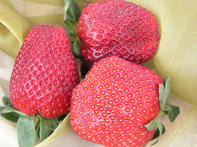
The origin of the name is uncertain. Some say it refers to the plant’s spreading habit, the way it is strewn over the production area. Others think it might be a reference to the straw in which it used to be sold many years ago in England or the mulch in which strawberries are often produced.
Strawberries have been used for medicinal purposes by the ancient Romans as far back as 230 BC, to cure anything from melancholy to kidney stones.
During the mediaeval times, it was seen as an aphrodisiac and a symbol of love because of its heart shape and red colour. Strawberry designs, during this time, were often carved onto altars and at the top of church and cathedral pillars to symbolise perfection and righteousness.
As claimed by David Trinklein of the University of Missouri, a prominent figure in Napoleon’s court - Madame Tallien, was famous for bathing in strawberries. Allegedly she used up to ten kilograms of strawberries per bath.
Native Americans were already eating strawberries when the colonists arrived. Cultivation started around the Renaissance period in Europe, but the United States developed the first hybrid in 1780.
International Production
China is the top strawberry producing country in the world, accounting for more than 40% of production, according to Tridge, a global sourcing hub. The United States is the second biggest producer accounting for roughly 15%, followed by Mexico, Spain, Turkey and Egypt, which each accounts for 4 to 5% of the total production.
Spain is the top exporter, accounting for 23% of total exports, followed by Mexico, which accounts for 22%, the United States, which accounts for 18% and the Netherlands, which accounts for 10.2%.
The top importer is the United States, accounting for just over 20% of imports, followed by Canada, which accounts for 13% and Germany, which accounts for 10% and the United Kingdom, which accounts for 8%.
Local Production
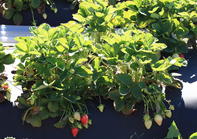
The first strawberry varieties were already brought to South Africa in 1656. The South African Strawberry Growers Association was established in 1972 to provide growers with a platform where specific issues can be addressed to the mutual benefit of its members.
Production has increased significantly in South Africa over the past decade due to the growing demand, but is nevertheless expensive and labour intensive, resulting in about 12 producers accounting for roughly 90% of all production.
Production
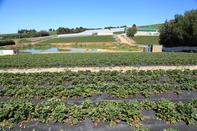
Strawberries thrive in areas with cold winters and mild summers and grow best in well-drained soils with a high organic matter content. Most of South Africa’s strawberries are produced in Brits - a town in the Free State, in George, Paarl and Stellenbosch in the Western Cape.
About half the strawberries are produced outside, while the rest is produced under protection. This not only helps to protect this high-value crop against environmental elements but also lengthens the production season and improves berry quality. Planting under protection however significantly drives up production costs.
Production Season
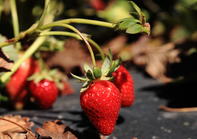
Depending on the variety and production region, strawberries are planted from March to April and harvested from June to December in South Africa.
Varieties
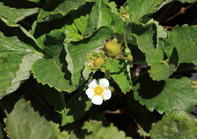
Most of the common varieties are hybrids of the wild Virginia strawberry, which is native to North America and a Chilean variety. Different types of strawberries are planted in South Africa, with most of the plant material being under breeder’s rights, which means that farmers either have to pay royalties or belong to a growers club to gain access to the plant material.
The varieties are either day-neutral or short day growers. Day-neutral varieties flower independent of day length, whereas short day growers require a certain amount of daylight to flower. They generally flower during spring or fall.
Sales
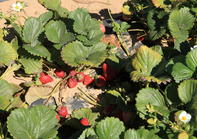
Almost half of South Africa’s strawberries are sold fresh, locally. The rest is either processed or exported to other African countries, such as Swaziland, Namibia, Mauritius and Mozambique, or to Middle Eastern countries, such as the United Arabian Emirates, Qatar and Kuwait.
Uses
Strawberries are considered a superfood because of their high vitamin, mineral, fibre and antioxidant content. Strawberry “seed” is also rich in Omega 3.
Strawberries may be enjoyed raw, used in salads, baking and yoghurts or processed into jams, confiture, drinks or syrups.
The fruit and leaves are used to treat a wide variety of conditions, ranging from arthritis to fever, intestinal and kidney ailments to blood purification and anaemia. It may also be used as compresses to treat rashes.